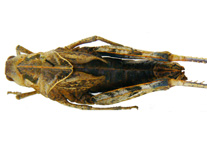Abstract
Caiman crocodilus apaporiensis has been considered by several authors as an extreme of morphological variation within the Caiman crocodilus complex. Here, we evaluate its position in the Caiman crocodilus complex morphospace using morphological traits from head shape. We examined the holotype and seventeen paratypes of Caiman crocodilus apaporiensis Medem 1955 deposited at the Field Museum of Natural History. We performed multivariate morphometric analyses: principal component analysis (PCA) and discriminant function analysis (DFA), based on 21 cranial traits of of C. c. apaporiensis, C. yacare and the C. crocodilus complex (C. c. chiapasius, C. c. fuscus andC. c. crocodilus). We find a notable separation of C.c. apaporiensis from C. yacare and C. crocodilus complex in the morphospace. We suggest that geographic isolation might have driven this morphological separation from the C. crocodilus complex, but further analysis are necessary to confirm whether these differences are related with genetic differentiation within the complex. In addition, we suggest that environmental heterogeneity might drive the evolution of independent lineages within the C. crocodilus complex.

